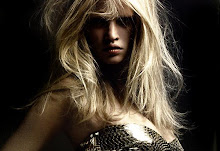
Paul Poiret, Visionary Artist-Couturier of Early 20th Century, to be Celebrated by Metropolitan Museum's Costume Institute in Spring 2007
Gala Benefit to Take Place May 7 with Honorary Chair François-Henri Pinault and Co-Chairs Cate Blanchett, Nicolas Ghesquière, and Anna Wintour
Exhibition dates: May 9–August 5, 2007
Exhibition location: Special exhibition galleries, first floor
Press preview: Monday, May 7, 10 a.m.–1 p.m.
Paul Poiret – who at the height of his career in pre-World War I France was the undisputed "King of Fashion" and whose sweeping vision led to a new silhouette that liberated women from the corset and introduced the shocking colors and exotic references of the Ballets Russes to the haute couture – will be celebrated with a landmark exhibition at The Metropolitan Museum of Art from May 9 through August 5, 2007. He has not been the focus of a major museum exhibition in more than 30 years.
"The historic significance and influence, up to the present day, of Poiret's work is breathtaking," said Harold Koda, Curator in Charge of the Metropolitan Museum's Costume Institute. "He pioneered a self-confident modernity based on woman's seductive femininity, and envisioned a 'total lifestyle' that extended from how she should dress, to what fragrance she should wear and how she should decorate her home – an approach reflected in the strategies of many of today's fashion houses." Presented in a series of tableaux, the garments on view will highlight the multiple facets of his astonishing inventiveness – including the beauty of his draped, unstructured fabrics and his fascination with the Ballets Russes, the Wiener Werkstätte, Orientalism and the 1001 Nights-will be complemented by paintings, illustrations, sculpture, and other objects that explicate his much broader artistic vision. At the core of the exhibition will be a grouping of the stunning creations acquired by the Metropolitan in the much-heralded 2005 sale of clothing from Poiret's estate."
The exhibition is made possible by Balenciaga.
Additional support has been provided by Condé Nast
.
To celebrate the opening of the exhibition, the Museum's Costume Institute Benefit Gala will take place on Monday, May 7, 2007. François-Henri Pinault will serve as Honorary Chair of the Gala. Co-Chairs will be actress Cate Blanchett, Nicolas Ghesquière, Creative Director of Balenciaga, and Anna Wintour, editor-in-chief of Vogue.
To celebrate the opening of the exhibition, the Museum's Costume Institute Benefit Gala will take place on Monday, May 7, 2007. François-Henri Pinault will serve as Honorary Chair of the Gala. Co-Chairs will be actress Cate Blanchett, Nicolas Ghesquière, Creative Director of Balenciaga, and Anna Wintour, editor-in-chief of Vogue.
More than any other designer of the 20th century, Paul Poiret – who is credited both with liberating women by making the corset démodé and with restricting their gait with narrow-hemmed hobble skirts – elevated fashion to the status of art. Like the artists with whom he collaborated, Poiret's work was fueled by the dominant discourses of the day, including Classicism, Orientalism, Symbolism, and Primitivism. The "Pasha of Paris," as he was known, was responsible for introducing the vivid colors of the Fauvists and the exotic references of the Ballets Russes to the haute couture. Poiret's protean genius also extended beyond fashion to the realms of art, theatre, architecture, and interior design. As well as discussing his design legacy, the exhibition will focus on Poiret's collaborations with such artists as Paul Iribe, Georges Barbier, and Georges Lepape. Poiret's designs will be presented in a series of vignettes evocative of the drawings of these artists for such fashion periodicals as Art Goûx Beauté and La Gazette du Bon Ton.
The exhibition will include several garments from the May 2005 Paris auction of the private collection of Paul Poiret's descendants, many of which had never before been photographed or put on public display. The Metropolitan Museum acquired several of these garments – which were made for Poiret's wife Denise, who was his muse and wore his designs without any concession to prevailing tastes – at the auction.
While apprenticing in his teens to an umbrella maker, Paul Poiret entered the world of fashion when he sold some of his sketches to Madeleine Cheruit at her Paris fashion house. After stints with designers Doucet and Worth, he opened his own house in 1903 and was boosted by the patronage of Réjane, a famous actress of the period, among others. In his groundbreaking designs, he led the way to the chemise dress (later refined through a reductive modernism by Chanel and his other rivals) with his revival of Directoire silhouettes and his referencing of the simple cuts of ethnic costume. In 1911 he became the first fashion designer to create and market his own perfume, which he named after Rosine, his first daughter. Also in 1911, he created a series of workshops for the production of fabrics, furniture, and a range of decorative objects as an extension of his overall aesthetic. He and his wife were renowned for their glamorous excess and sumptuous entertaining, marked by fêtes such as the now-legendary "Thousand and Second Night" party in June 1911 – at which all of the guests were required to wear appropriate costume. Poiret spent the last decade of his life in debt, having been superseded by other designers including Coco Chanel and Jean Patou. As the famous, and perhaps apocryphal, story is told, of the 1920s chance encounter between the "King of Fashion" and young Coco Chanel: Poiret inquired of the black-clad Chanel, "For whom, madame, do you mourn?" to which Chanel replied, "For you, monsieur."
Credits and Related Publication
Poiret is organized by Harold Koda, Curator in Charge, with the assistance of Andrew Bolton, Curator, both of the Metropolitan Museum's Costume Institute.
A book, published by The Metropolitan Museum of Art and distributed by Yale University Press, will accompany the exhibition, which will also be featured on the Museum's Web site (www.metmuseum.org).
The design for the 2007 Costume Institute gala benefit will be created by Jean-Hugues de Chatillon and Raul Avila







No comments:
Post a Comment